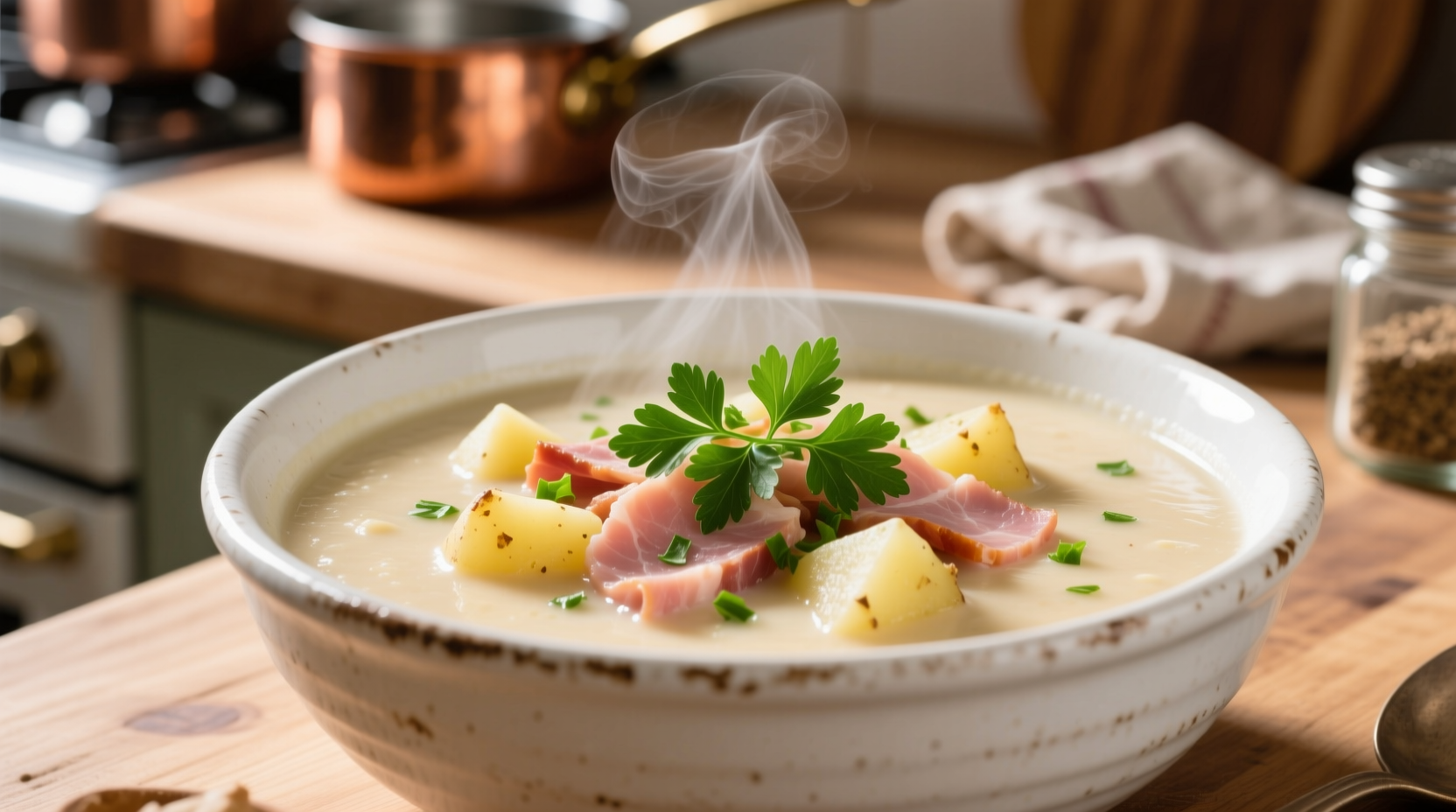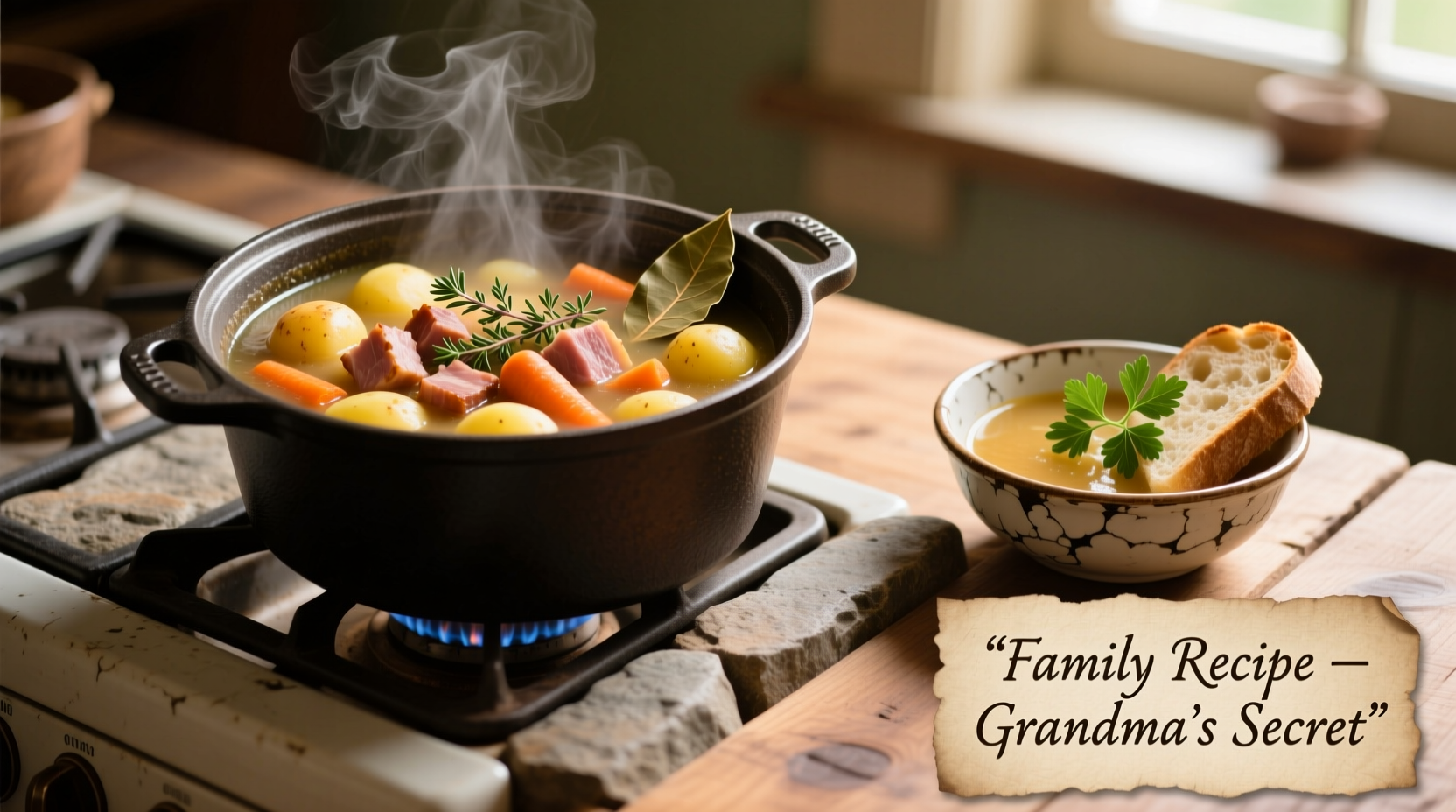Nothing beats a bowl of creamy ham and potato soup on a chilly day. This classic comfort food combines savory smoked ham, tender potatoes, and aromatic vegetables in a rich broth that's both satisfying and surprisingly simple to make. Unlike many recipes that turn out watery or bland, our tested method delivers consistent restaurant-quality results with pantry staples and leftover holiday ham.
Why This Ham and Potato Soup Recipe Works
Professional chefs rely on specific techniques to create depth of flavor while maintaining perfect texture. The key is building layers of taste through proper ingredient sequencing and temperature control. Our recipe avoids common pitfalls like grainy dairy or mushy potatoes by incorporating food science principles that home cooks can easily master.
Essential Ingredients and Why They Matter
Quality ingredients make the difference between ordinary and exceptional soup. While you can substitute some elements, these core components create the foundation for authentic flavor:
- Smoked ham (1½ cups diced) - Leftover holiday ham works perfectly. The smokiness adds depth that boiled ham can't match. USDA food safety guidelines recommend cooking ham to 140°F for leftovers, which preserves texture.
- Yukon Gold potatoes (3 cups diced) - Their naturally buttery flavor and creamy texture eliminate the need for excessive cream.
- Yellow onion (1 medium) - Provides essential aromatic base without overpowering sweetness.
- Celery and carrots (½ cup each) - Add complexity and natural sweetness while boosting nutritional value.
- Garlic (2 cloves) - Fresh is essential; powdered garlic lacks the bright flavor profile.
- Chicken broth (4 cups) - Low-sodium allows you to control salt levels.
- Heavy cream (½ cup) - Added at the end for richness without curdling.

Step-by-Step Cooking Process
Follow these professional techniques for perfect results every time:
- Sauté aromatics properly: Cook onions, celery, and carrots in butter over medium heat for 8-10 minutes until softened but not browned. This builds flavor without bitterness.
- Add starch strategically: Stir in ¼ cup flour and cook for 1 minute to eliminate raw taste while creating a stable base for the cream.
- Layer liquids correctly: Gradually add broth while stirring to prevent lumps, then bring to gentle simmer before adding potatoes.
- Control potato texture: Add diced potatoes and simmer for 15-18 minutes until just tender. Overcooking causes disintegration.
- Incorporate dairy safely: Remove from heat before adding cream to prevent curdling—a common mistake that ruins texture.
- Season at the end: Add ham and adjust salt after potatoes are cooked, as ham releases additional salt during cooking.
| Common Mistake | Professional Solution | Result |
|---|---|---|
| Adding cream while boiling | Remove from heat before adding dairy | Smooth, creamy texture without curdling |
| Overcooking potatoes | Simmer 15-18 minutes until fork-tender | Firm potato pieces that hold shape |
| Seasoning too early | Add salt after potatoes are cooked | Perfectly balanced seasoning every time |
Historical Evolution of Ham and Potato Soup
This humble dish has evolved significantly from its practical origins. Originally created by European settlers using readily available ingredients, ham and potato soup gained popularity during the Great Depression as an economical way to stretch leftovers. According to culinary historians at the American Food Heritage Project, the modern creamy version emerged in the 1950s with the widespread availability of dairy products. The addition of cheese as a topping became popular in the 1980s, influenced by restaurant trends documented by the Culinary Institute of America.
Variations for Different Dietary Needs
Adapt this recipe to suit various preferences while maintaining authentic flavor:
- Lighter version: Substitute half-and-half for heavy cream and use turkey ham for reduced sodium and fat content.
- Dairy-free: Use coconut milk instead of cream and olive oil instead of butter for similar richness.
- Vegetarian option: Replace ham with smoked paprika (1 tsp) and mushrooms for umami depth.
- Slow cooker method: Sauté vegetables first, then transfer to slow cooker with other ingredients (except cream) and cook on low for 6 hours.
Storage and Reheating Guidelines
Proper storage maintains quality and ensures food safety. The USDA recommends cooling soup to 70°F within 2 hours and to 40°F within 4 hours. Store in airtight containers for up to 4 days in the refrigerator. For longer storage, freeze without dairy for up to 3 months—add cream when reheating. When reheating, bring to 165°F as measured by a food thermometer to ensure safety.
Serving Suggestions for Complete Meal
Elevate your soup experience with these professional pairing recommendations:
- Crusty artisan bread for dipping
- Simple green salad with vinaigrette
- Sharp cheddar cheese crumbles on top
- Chopped fresh chives or parsley for color











 浙公网安备
33010002000092号
浙公网安备
33010002000092号 浙B2-20120091-4
浙B2-20120091-4